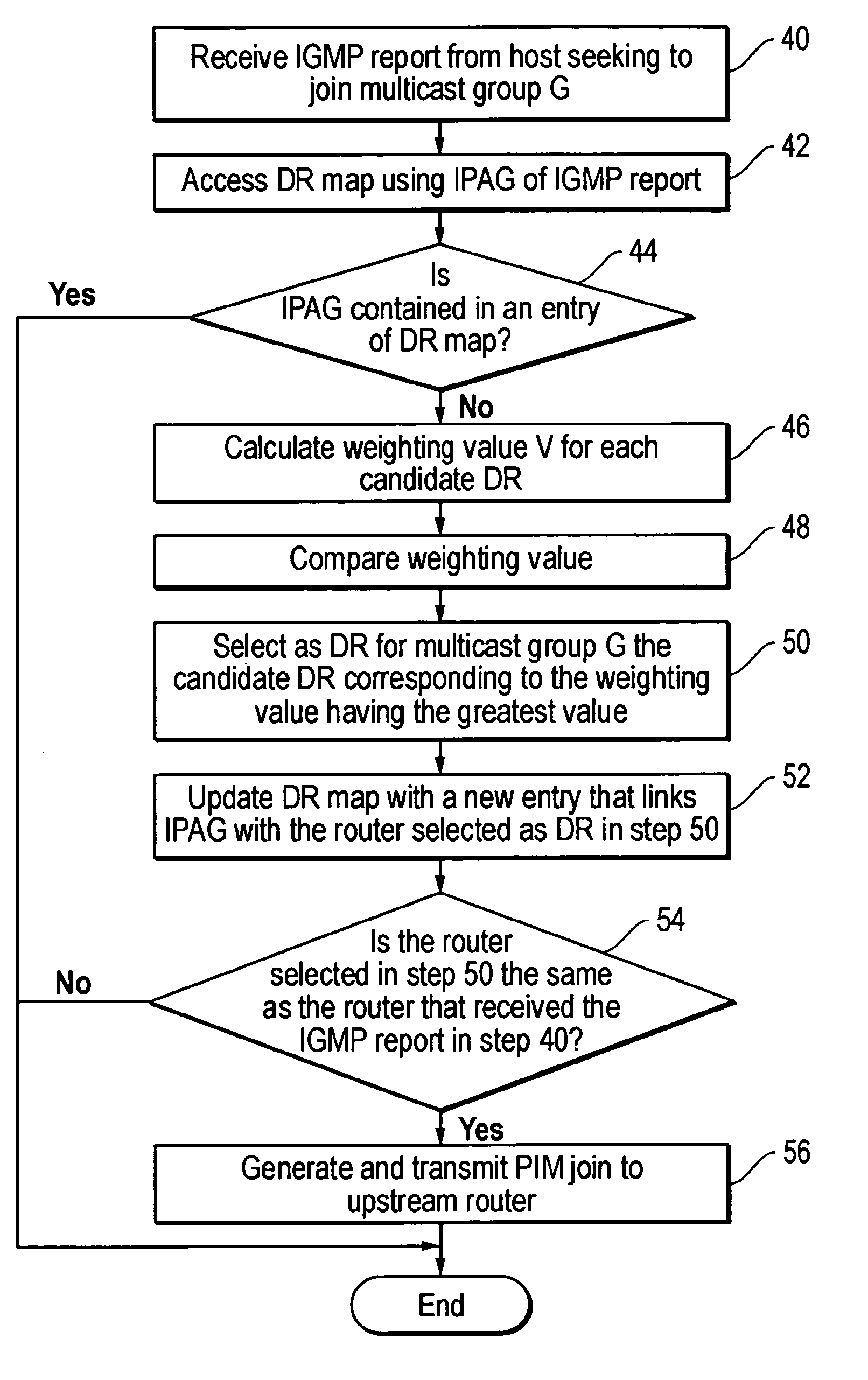Designated router assginment per multicast group address/range
a router and multicast technology, applied in the direction of digital transmission, data switching network, electrical equipment, etc., can solve the problem of overburdening the processing bandwidth of the router r
- Summary
- Abstract
- Description
- Claims
- Application Information
AI Technical Summary
Benefits of technology
Problems solved by technology
Method used
Image
Examples
Embodiment Construction
[0021] Disclosed is an apparatus or method for assigning separate DRs to multicast groups or range of multicast groups. Using the present invention, for example, the DR assigned to a first multicast group or range of multicast groups is distinct from the DR assigned to a second multicast group or range of multicast groups. The present invention enables data packets for the first multicast group or range of multicast groups to be transmitted to a LAN via a DR that is distinct from the DR that transmits data packets to the LAN for the second multicast group or range of multicast groups. The present invention will be described with reference to a network employing IPv4, it being understood that the present invention may be implemented in a network employing IPvV6.
[0022] The present invention can be employed in a router or other device (e.g., a general purpose or special purpose completer) which is configured to function as a router. Embodiments within the scope of the present inventio...
PUM
 Login to View More
Login to View More Abstract
Description
Claims
Application Information
 Login to View More
Login to View More - R&D
- Intellectual Property
- Life Sciences
- Materials
- Tech Scout
- Unparalleled Data Quality
- Higher Quality Content
- 60% Fewer Hallucinations
Browse by: Latest US Patents, China's latest patents, Technical Efficacy Thesaurus, Application Domain, Technology Topic, Popular Technical Reports.
© 2025 PatSnap. All rights reserved.Legal|Privacy policy|Modern Slavery Act Transparency Statement|Sitemap|About US| Contact US: help@patsnap.com



